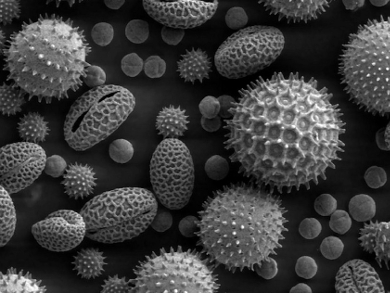Scanning electron microscopy (SEM) uses an electron beam instead of light for imaging. This beam requires a high vacuum, which limits the types of specimens that can be used. However, in spite of electron scattering, the beam can still travel a distance of roughly 50−100 μm in air (the mean free path or MFP). The makes so-called airSEM possible, where the specimen is placed outside of the vacuum chamber behind an electron-transparent window. Currently, nanometer-thin silicon nitride windows are used for this technique. They are the limiting factor for resolution and contrast, since they scatter electrons more strongly than air.
Jiwoong Park, David A. Muller, Cornell University, Ithaca, NY, USA, and colleagues have used bilayer graphene as an improved window material for airSEM. The team grew the graphene films by vapor deposition and transferred them onto a silicon nitride frame that holds the graphene in place. They tested the material in three different airSEM imaging modes: backscattered electron (BSE), secondary ion (SI), and scanning transmission electron microscopy (STEM). The researchers found a 5-fold-increase in the signal-to-noise ratio compared to silicon nitride windows.
According to the team, this significantly improved performance can be attributed to the reduced thickness of the film and the fact that carbon is a lighter element than silicon and nitrogen, which reduces electron scattering. Additionally, the high mechanical strength of graphene allows the separation of high vacuum from atmospheric pressure for long periods of time. The material could also be applied in other electron spectroscopy techniques such as high-energy X-ray photoelectron spectroscopy (XPS).
- Atomically Thin Graphene Windows That Enable High Contrast Electron Microscopy without a Specimen Vacuum Chamber,
Yimo Han, Kayla X. Nguyen, Yui Ogawa, Jiwoong Park, David A. Muller,
Nano Lett. 2016.
DOI: 10.1021/acs.nanolett.6b03016




